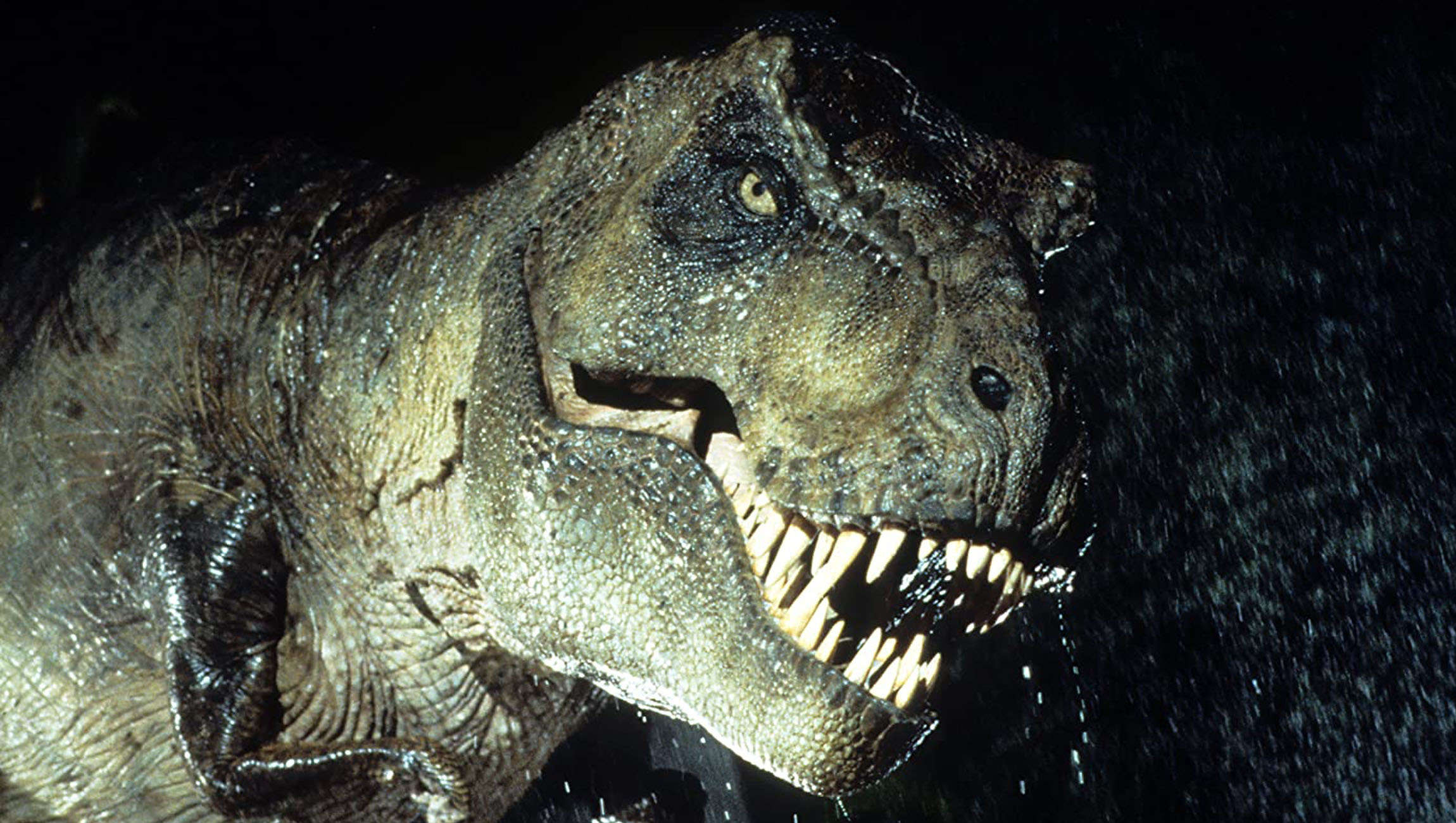Create a free profile to get unlimited access to exclusive videos, sweepstakes, and more!
Science shows T. Rex grew up into a monster faster than anyone thought

It should be no surprise that the dinosaur which grew into what could have be the most infamous prehistoric predator ever had a big mouth as a teen. No, really.
Tyrannosaurus Rex grew up fast in terms of how long it took to go from a slender creature with sharp teeth to an absolute bone-crusher. Paleontologist Thomas D. Carr of Carthage College has now found that T. Rex got as vicious as it was going to get around age 15, when its skull went from long and low to big and bulky, and it got a scary set of teeth. Teens were just as deadly as adults. Even though they would grow slightly more, skull size and bite force were what mattered. Scotty, the most menacing T. Rex to ever have its bones unearthed, was just barely an adult.
By the way — there was no such thing as Nanotyrannus. Anything mislabeled as such was just a juvenile T. Rex specimen that had not yet gotten its full predation equipment.
“The change from a low to a tall skull is a central part of the transition from a weak to a strong skull… in the subadult growth stage, [this] shows that the transition from shallow to tall also occurred from the juvenile to the subadult growth categories,” said Carr in a study recently published in Paleontology and Evolutionary Science.
While T. Rex had 21 total growth phases, which are really sub-phases of five main categories. During its 30-year lifespan, it would go from juvenile to adolescent to subadult, adult and finally senescent (older) adult. An extreme change in the dinosaur’s morphology, otherwise known as a secondary metamorphosis, is associated with sexual maturity, though its body would mature after it reached sexual maturity. It took two years for it to transform from a sleek and quick juvenile to a massive monster. While T. Rex continued to get huge into adulthood, its most drastic growth spurt occurred during secondary metamorphosis.
Subadult T. Rex around 15 years old would ambush prey instead of throw tantrums. Bite force became at least three times stronger from the juvenile to the subadult phase, and those lethal teeth grew significantly longer than they were wide. Bite force would continue to increase into adulthood Having a crushing bite was mandatory for a T. Rex if it actually wanted to eat. Morphing into a total beast meant that they could no longer run as fast as they did when they were juveniles, so they needed all the jaw strength they could get to make sure dinner wouldn’t get away.
“It is predicted that the trend of increasing [tooth] bending strengths occurred throughout ontogeny, with an abrupt increase at the transition between juveniles and subadults,” Carr said, also noting that the strength of the dinosaur’s teeth increased marginally from the subadult to adult phase.
T. Rex’s bite force was high for its body size. Maybe it was just a lizard compared to herbivorous sauropods Patagotitan or Argentinosaurus, but T. Rex was still enormous for a theropod. Extra bulk didn’t hurt. By the time one of these carnivores was 17 or 18, it is thought to have weighed in at about 3 tons. The more power to crush with, the better.
Something that remains unknown is whether the king of dinosaurs was dimorphic. Because there are no skeletal features that confirm whether fossilized remains belonged to a male or a female, it is impossible to tell. Like extant crocodiles, males might have been larger than females. Not that it mattered if you were a Triceratops or other tasty menu item that had no idea it had just taken its last breath.
If there is one thing this study has revealed about T. Rex, it’s that that star of Jurassic Park definitely lived up to the hype.


























